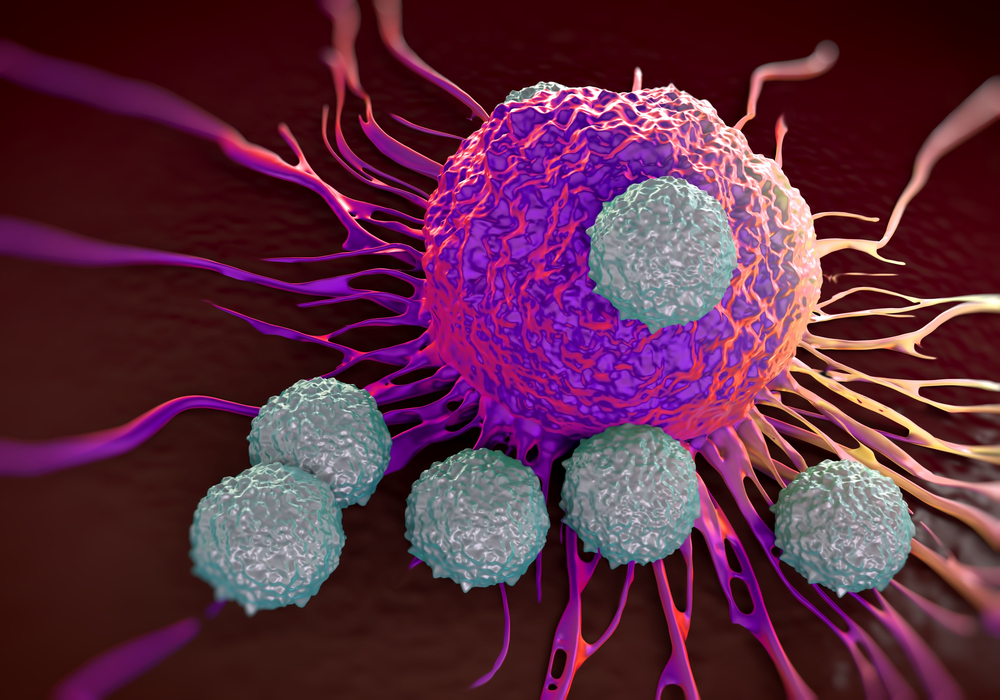Nanoparticle-targeted Phototherapy Tested in Mice; Might Be Multiple Myeloma Therapy Someday
Written by |

Animal studies have shown that a new treatment strategy using phototherapy might be used to treat inaccessible cancers, including multiple myeloma.
The therapy makes use of light-sensitive medicines that are activated with light from cancer-imaging agents, producing toxic compounds that kill cancer cells.
The study, “Radionuclides transform chemotherapeutics into phototherapeutics for precise treatment of disseminated cancer,” was published in the journal Nature Communications.
Most deadly cancers tend to metastasize, which requires treatment with systemic chemotherapeutic drugs and radiation therapy, affecting many areas of the body. While promising, clinical trial data for second-generation systemic therapies indicates these strategies are associated with life-threatening off-tumor toxicities.
In many cancers, the bone marrow is involved either as the point of origin or a site of distant metastasis. The bone marrow remains a highly challenging environment for selective cancer cell killing.
Phototherapy (PT) is a type of treatment that uses external light to kill cancer cells. PT offers high spatial precision and control of tumor killing, making it an effective treatment strategy for many cancers. However, external light has limited tissue penetration, restricting use of this treatment to the skin and areas accessible with an endoscope.
To improve this technique, researchers at the Washington University School of Medicine used a chemotherapy drug called titanocene. In clinical trials, titanocene has not been effective, even at high doses. However, when it is exposed to visible light, titanocene become particularly destructive to cells.
Researchers used titanocene and packaged the drug inside nanoparticles designed to target a protein called CD49d, which is found on some cancer cells. When the nanoparticles make contact with the cancer cells, titanocene is released into the cells.
The next step was to deliver a cancer-imaging agent called fluorodeoxyglucose (FDG), a type of sugar, which is taken up by cancer cells at very high rates. This causes tumors to light up during a positron emission tomography (PET) scan, but also causes the activation of titanocene, which then kills the cells.
Since titanocene and FDG together are absorbed only by cancer cells, this treatment is more specific to cancer cells and should have less toxicity. When absorbed separately, the two compounds are not toxic. This makes it an ideal treatment for metastatic disease.
Researchers used this method once a week for four weeks to treat mice with multiple myeloma. Results showed that treated mice had significantly smaller tumors and lived longer than the untreated mice. In fact, half of treated mice survived for at least 90 days, while in the untreated group mice lived for a median of 62 days.
Interestingly, there were certain types of multiple myeloma that were not sensitive to this technique. However, researchers later found out that it was because the protein that the nanoparticles targeted on the cancer cell surface (CD49d) was not present on these multiple myeloma cancer cells. Once it is known what these cancer cells express on the surface, the nanoparticles can be designed to target and kill those cells specifically.
The researchers hope to one day be able to use this strategy to prevent the recurrence of cancer.
“We are interested in exploring whether this is something a patient in remission could take once a year for prevention,” senior author, Samuel Achilefu, PhD, said in a press release. “The toxicity appears to be low, so we imagine an outpatient procedure that could involve zapping any cancerous cells, making cancer a chronic condition that could be controlled long-term.”






